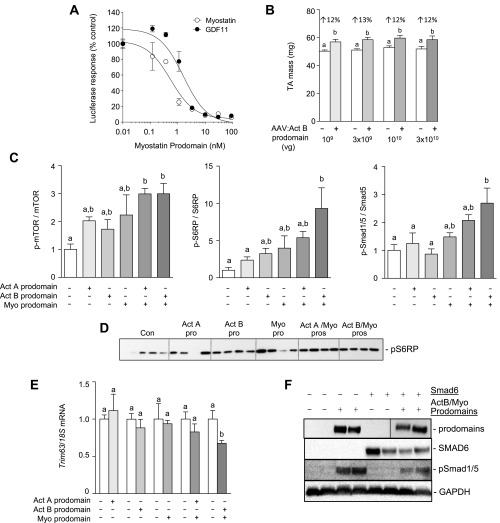Fig. S1.
Specificity of the myostatin prodomain and effect of inhibiting activin and myostatin signaling on protein synthesis, protein degradation, and Smad1/5 pathways. (A) The myostatin prodomain blocks myostatin- or GDF11-induced activation of a Smad2/3-responsive luciferase reporter in HEK293T cells. (B) Demonstration that the standard dose of AAV:Act B prodomain (1010 vg) used in this study is saturating for endogenous activins (n = 5–6, paired Student’s t test, data groups with different letters achieved significance of P < 0.05). (C) Densitometric analysis of Western blots probed for total and phosphorylated forms of mTOR, S6RP, and Smad1/5 in response to activin and myostatin inhibition (n = 5, one-way ANOVA with Tukey’s post hoc test, data groups with different letters achieved significance of P < 0.05). (D) Expanded Western blot (n = 4–5 TAs) of S6RP phosphorylation in response to prodomain treatment. (E) qRT-PCR analysis was used to assess mRNA expression of Trim63 (Murf1) in muscles of WT mice treated with prodomains (n = 5–6, paired Student’s t test, data groups with different letters achieved significance of P < 0.05). (F) Western blot analysis of TA muscles was used to assess prodomain and Smad6 expression and the phosphorylation of Smad1/5. For the prodomain Western blot, two lanes, representing samples not related to the results for this paper, were spliced out (black line).

